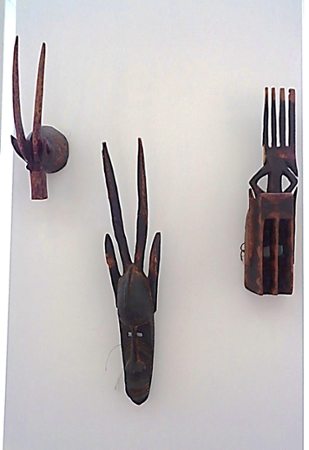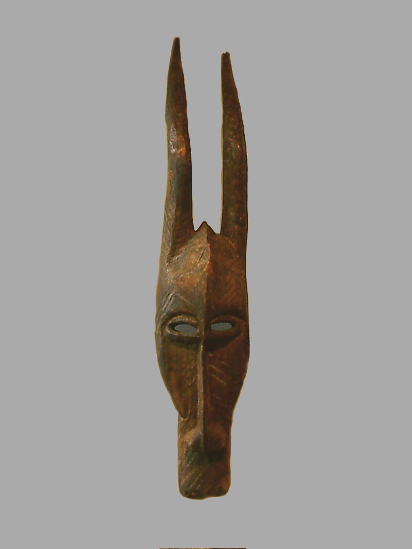Masks
/https://dev6.siu.edu//search-results.php
Last Updated: Oct 18, 2023, 03:23 PM
The most prolific sculptural form found in Africa, South of the Sahara, is the mask. A mask and accompanying paraphernalia conceal a wearer’s own identity as he or she takes on that of another, often a spirit or an ancestor who is either revered or feared, presented in performance. A mask and wearer, thus, become a living breathing embodiment that bestrides the physical and the spirit worlds in ceremonies and performances in which otherworldly powers are invoked to aid in human affairs. Masks are especially of great import in initiation and funerary rites because they are markers of transition between this world and the other, the afterworld, when connections between physical and spiritual worlds are perceived to be particularly most intense. During these ceremonies and ritual performances, participants seek to reaffirm the order of their society by reference to their beliefs and values symbolized by the masks. Masks, therefore, are bearers of veneration and authority demanded by the occasion and encapsulate essential religious and socio-cultural precepts of a given African community.
Wooden masks are found among the Bwa of Mali and Burkina Faso, who are divided into three endogamous castes: farmers, blacksmiths, and griots (bards and musicians). The Bwa Hawk mask has a circular face with geometric designs painted in vivid colors and is surmounted by a large plank. The motifs are symbols linked to Do religious association and to the history of the clan (Visona et al. 2001, 159). A Bwa mask is worn in front of the face with the body of a wearer completely covered by raffia. Bwa Hawk masks are differentiated only by the shape of the horns, while the muzzle and protruding eyes remain the same structure. A dancer looks through the open hole of the mouth. Supernatural forces that act to benefit the clan are thought to reside in the masks. The Bwa Hawk masks are used in initiation ceremonies which both boys and girls undergo. The older initiates impart the meanings of these masks to newer and younger ones.
Edna Patterson-Petty’s Bwa mask quilt was derived directly from the Bwa Hawk mask from the Reginald Petty African Art Collection. She stated:
I wanted to create something that emulated the wooden version of the mask but in my own media. I have a firm attachment to this mask which is made from raw silk and is adorned with beads and fabric paint.
African aesthetic values and sensibilities are inherent in African American culture; so that for Patterson-Petty reinterpretation of the mask in a medium that was personal was not appropriating an aesthetic expression but retrieving, reworking, and personalizing her ancestral heritage.
Masks
Bwa Masks


(Photos: Leonard Gadzekpo)
Bwa Hawk Mask Edna Patterson-Petty, Bwa Mask.
C20th. Wood. 2002. Quilted fabric paint and beads.
8 x14 x52 inches. 14 x 6 x 60 inches.
The Reginald Petty African Art Collection
Fafra Plaque Mask

(Photo: Leonard Gadzekpo)
Fafra Plaque Mask (Burkina Faso/Ghana)
C20th. Wood.
6 x 8 x 36 inches.
The Reginald Petty African Art Collection.
Bwa Hawk, Fafra, and Bwa Quilt Masks

(Photo: Leonard Gadzekpo)
Bwa Hawk and Fafra Masks and Bwa Mask Quilt by Edna Patterson-Petty
Bambara Masks

(Photos: Leonard Gadzekpo)
Bambara Mask Bambara Mask
C20th. Wood and Patina. C20th. Wood and Patina.
7 x 13 x 44 inches. 8 x 10 x 51 inches.
Reginald Petty African Art Collection
Nuna Antelope Mask

(Photo: Leonard Gadzekpo)
Nuna Antelope Mask
C20th. Wood, Paint and Patina.
13 x 16 x 49 inches.
Reginald Petty African Art Collection
Nuna, Bambara, and Dogon Mask

(Photo: Leonard Gadzekpo)
Nuna Antelope, Bambara, and Dogon Masks
